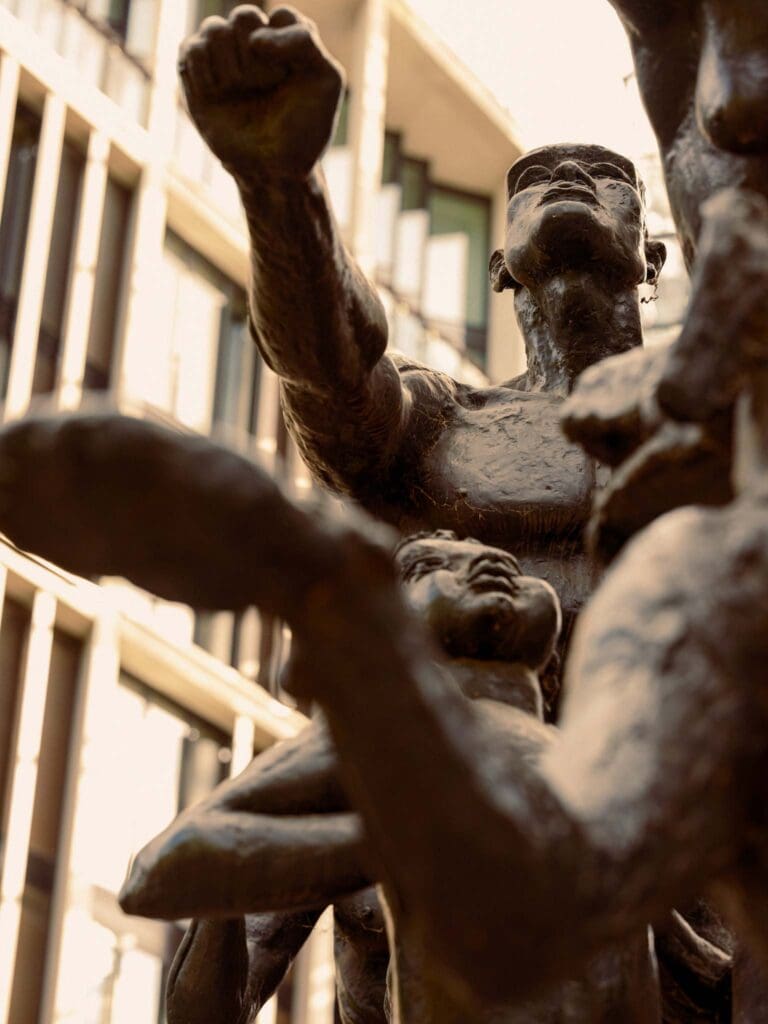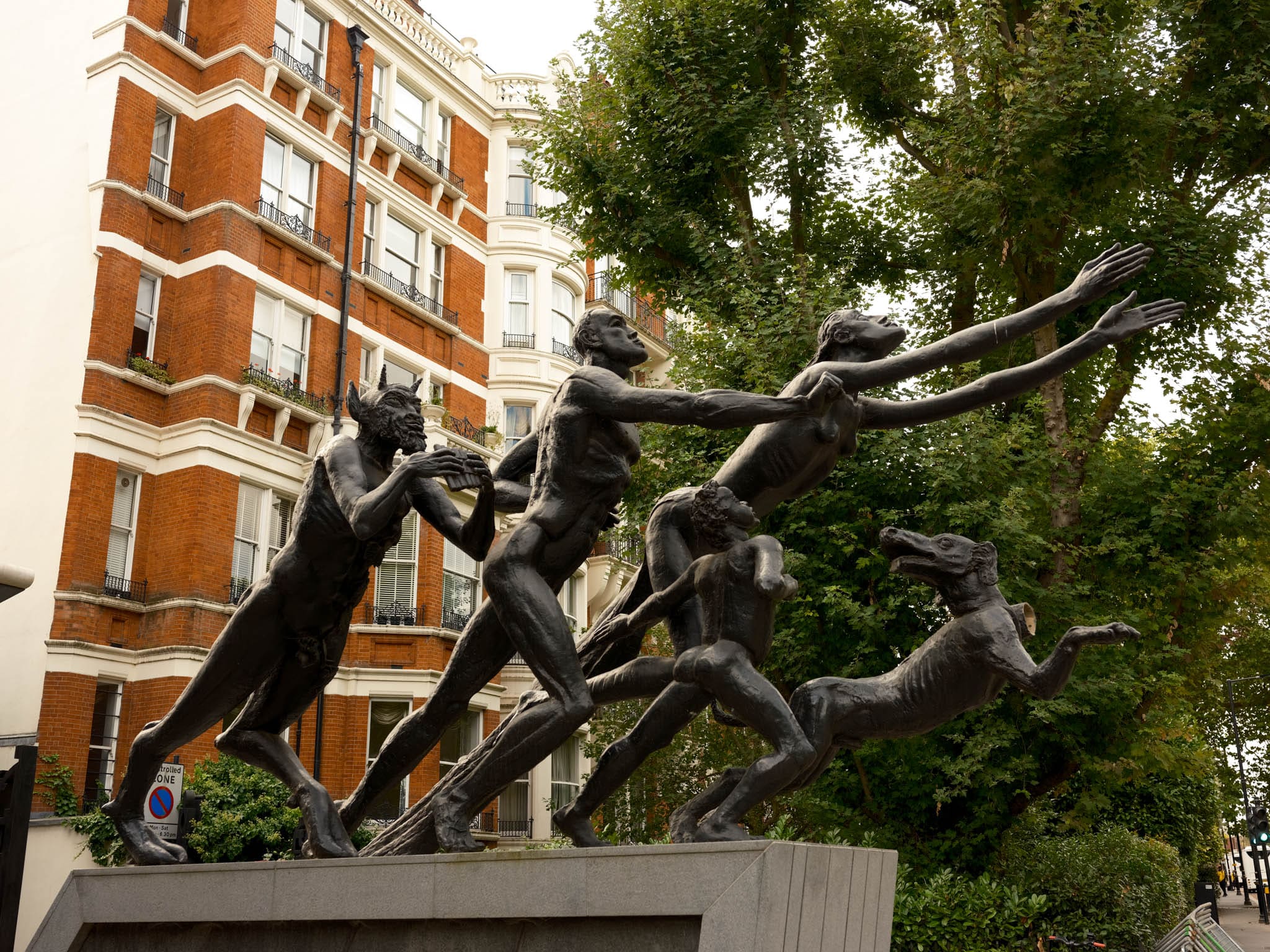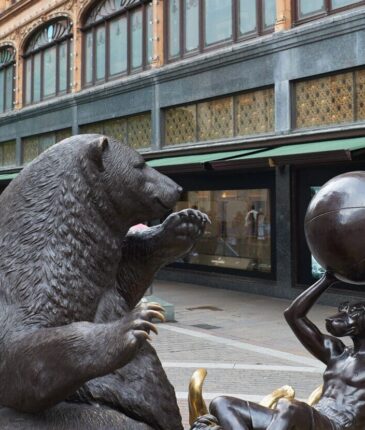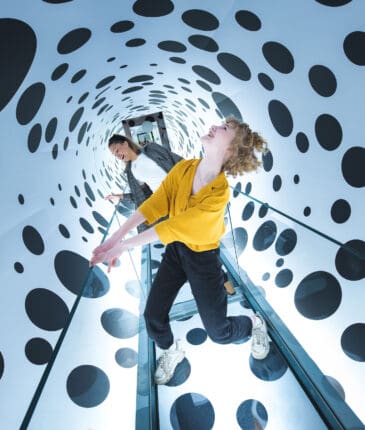The expressive bronze statue in Hyde Park is the final work of the late, great sculptor Sir Jacob Epstein
Meet… The Rush of Green statue
Also known as the Pan statue, The Rush of Green is an energetic sculpture located at the junction of Edinburgh Gate and South Carriage Drive in the south area of Hyde Park. It is the last artwork of Sir Jacob Epstein, completed shortly before his death in 1959. It was cast in bronze posthumously, and was originally commissioned to celebrate the completion of the neighbouring Bowater House office complex, which was demolished in 2006 and replaced with the luxury (and far more aesthetically pleasing) One Hyde Park development in 2010.
The Rush of Green is a rather unusual sculpture, but that shouldn’t come as a surprise to fans of Epstein. In it, a long-limbed family, seemingly led by their faithful dog, run outstretched towards Hyde Park, encouraged by the Greek god Pan playing his pipes. Epstein’s penchant for the naked human form is rather tame by today’s standards, but during his lifetime he was a highly controversial figure who challenged social and artistic taboos. Not just down to his depiction of male and female nudity but for his bold aesthetic, which eschewed the softer classical Greek sculpture style favoured in Europe at the time and which drew instead on so-called primitive art and influences from China, India and West Africa.
Epstein was born in New York to Polish-Jewish immigrants and later moved to Paris, studying at École des Beaux-Arts and Académie Julian with early aspirations to become a painter. He later settled in London and became involved with a bohemian and avant-garde crowd. He carved a niche (so to speak) in expressive portrait sculpture, creating busts of Albert Einstein and Winston Churchill and even designing Oscar Wilde’s tomb in Paris’s Père Lachaise Cemetery.
The Rush of Green was granted Grade II status in 2016 and is the second of Epstein’s works you can find in Hyde Park, with his memorial to naturalist WH Hudson located near the centre. This, like many of Epstein’s pieces, was met with public outrage when it was unveiled in 1924, with the Daily Mail writing: ‘take this horror out of our park’.
So next time you’re in this part of Hyde Park, why not take a moment to admire the influential enfant terrible of 20th-century sculpture. You can also check out a blue plaque dedicated to him affixed to the house where he lived and died between 1929 and 1959 at the enviable address of 18 Hyde Park Gate. The former Knightsbridge resident was apparently in the studio right up until his dying day, so it feels apt that the artist’s former home is located just a stone’s throw from the site of his final work.





